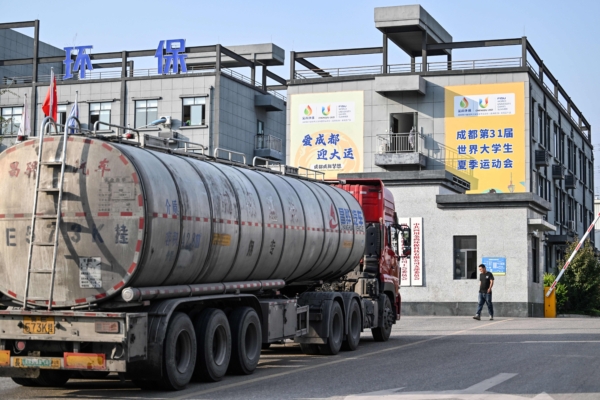Recently, the term “Third Line Construction” has re-emerged in China, sparking discussions as experts believe it is part of Chinese Communist Party’s long-term preparation for deteriorating US-China relations and potential geopolitical conflicts. The concept of “Third Line Construction” dates back to 60 years ago when the CCP relocated industries to remote mountainous areas as a strategic response to external military threats.
In September, the Chinese State Council announced plans to guide capital, technology, and labor-intensive industries from the eastern coastal regions to the central and western parts of the country. Simultaneously, provinces like Guangdong declared the cessation of “attracting foreign investments,” leading to speculations about a shift towards a backup industrial strategy. Reports surfaced that 1,500 factories in Guangdong would relocate to Sichuan, aligning with this strategy.
An article by “Muchen” on the mainland website “Kunlun Strategy” attracted attention by discussing the national backup strategy and the relocation of Guangdong’s factories to Sichuan. According to the article, Sichuan has been designated as a strategic hinterland due to its geographical advantages in defense and historical significance as a strategic relocation area during turbulent times in Chinese history.
The article listed prominent Guangdong-based companies like TCL Group, Lenovo, Xiaomi, Gree Electric Appliances, and others that are part of the massive relocation initiative, marking one of the most significant industrial migrations in Guangdong’s history.
Although the Chinese authorities have not officially responded to the industrial relocation in Guangdong, social media and experts have linked this move to the changing global economic landscape and CCP’s shift towards internal strategic development amid geopolitical tensions.
Scholars analyzing the “Third Line Construction” argue that the CCP’s shift from peaceful policies to a more militarized approach may escalate international tensions, potentially leading to unfinished projects and increasing conflict risks.
During the 60th anniversary of the “Third Line Construction,” the CCP’s official media reflected on its historical significance, originating from the need to safeguard industrial capabilities during times of external threats and conflicts.
Over the past years, China’s economic rise has been accompanied by shifts in policy focus, including the abandonment of the “Third Line Construction” in favor of coastal and export-driven developments. However, recent moves towards industrial consolidation and internal development suggest a strategic shift towards self-sufficiency and resilience.
Following the US-China trade war and the fragmentation of global supply chains, China’s internal restructuring plans signify an attempt to insulate itself from external disruptions and assert its independence in various sectors.
Experts point out that Xi Jinping’s frequent visits to strategic inland regions indicate preparations for potential conflicts, aligning with China’s ambitious long-term goals and geopolitical ambitions.
As the US presidential elections reach a critical stage, discussions about China’s industrial relocations continue to be intertwined with the uncertain future of US-China relations and the evolving dynamics in the Asia-Pacific region. The outcome of the elections is expected to have ripple effects on economic, trade, and geopolitical landscapes with significant implications for regional stability and security.

